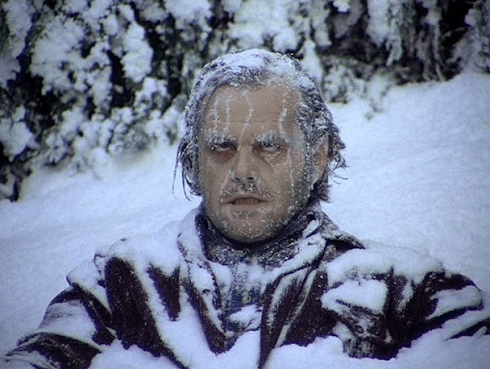The concerns of revelations of the content in trailers, In relation to opening sequences in films are labelling trailers as, 'narrative pornography'. As they tend to insert frequent amounts of 'exciting' material to the point, that the audience expect that same level of excitement to be employed in the film itself. This expresses a problem to directors, as the studio companies have presumptions of the measurements of content revealed to the audience, as opposed to the film directors. They claim it's for the essence of 'trailing the audience'.
Hitchcock begins to ellaborate about when the actual beginning of the film is, is it the image that we have of the film that we continue to watch upon in the cinema? Is it when the darkness of cinema falls? He explains that this element of urgency to not to miss the starting of the film, will result in watching a completely, 'different film'. Also, the beginning of the film 'instructs' the audience in how to watch the film.
Thomas Sutcliffe mentions,
'Films need to be seduce their audience into long term commitment. While there are many types of seduction. the temptation to go for the instant arousal is almost irresistable.' This suggests that 'grabbing the audience' in the opening sequence of a film is essential for engagement to continue to watch the rest of the film or films of that type/genre/director in general. The 'thrill of speed', which depicts the content that satisfies what the audience desires is a technique that films tend to follow to anticipate this sense of engagement. In
'Citizen Kane', we are met with opening shot of a tresspass sign, this provides the sense of 'breaking the rules', to amplifly the pre-meditated effect of excitement, as the audience venture in to a setting that is forbidden. In addition, this rises the question surrounding the genre of the movie, is it a horror, mystery, crime etc.?
Regarding comments by Director, Jean Jacques Beineix, the risks of 'instant arousal', present a problem to directors, concerning the content that is meant to excite the audience, it provides the question about what to do next for the director. In my opinion, the problem that would come about, would be attempting to maintain the same technique of how to present excitement to the audience, without switching to another method, which shall confuse the audience, more importantly, disengage them from the film, as a whole.
In the documentary, it mentions,
'a good beginning must make the audience feel that it doesn't know nearly enough yet, and at the same time make sure that it doesn't know too little'. Gary Ross expresses his opinion, about the opening sequence isn't about establishing, 'character', but essentially about establishing 'tone'. It provides the audience with the judgement, whether to be engaged. This brings about the element of suspense, that entices us to continue to watch the film to find out what occurs, this idea can be carried out in various ways, however, I believe there is a limit to how much you can keep the audience in the dark, over-complicate this suspense, and it shall confuse them and possibly disengage them from the film.
Critic Stanley Kauffmann described the 'Classic opening' as, an establishing shot of a landscape, typically a Skyscraper City, such as 'New York'. There would be shots of the buildings, overviews etc. then it would place a shot on the specific building that opening seq




